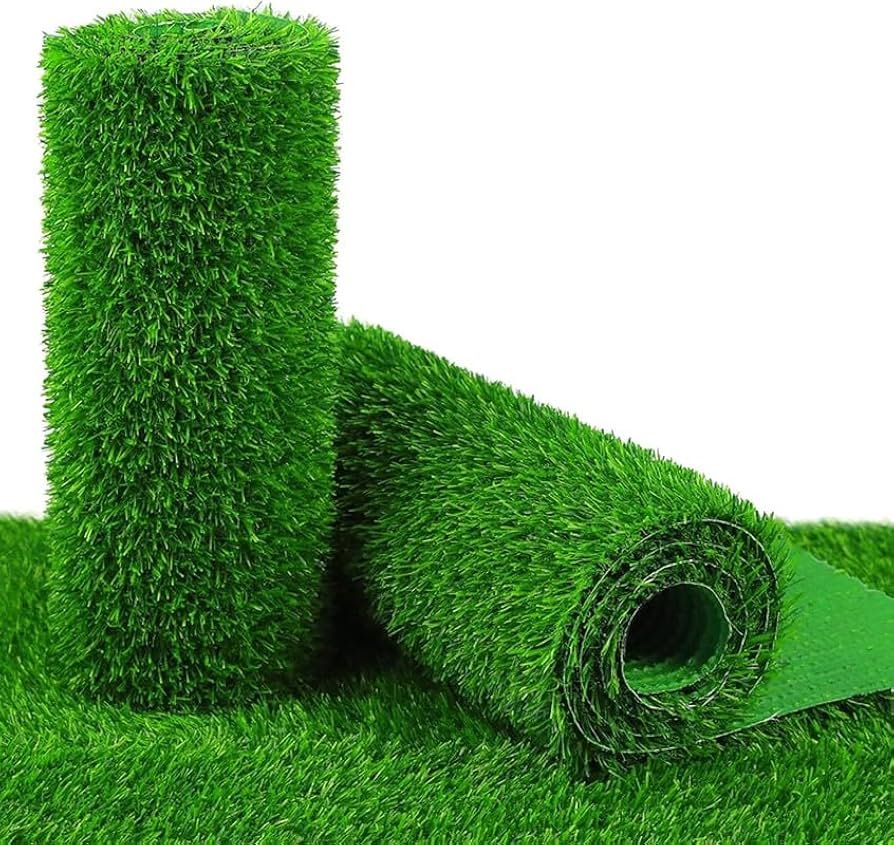Grass carpet, also known as artificial turf or synthetic grass, has emerged as a popular flooring option for both indoor and outdoor spaces. Its resemblance to natural grass, low maintenance requirements, and versatile applications have made it a favorite among homeowners, businesses, and event organizers. This article delves into the various aspects of grass carpet, exploring its benefits, applications, installation processes, and maintenance tips, all while highlighting why it’s a valuable choice in today’s design landscape.
What is Grass Carpet?
Grass carpet is an artificial floor covering designed to imitate the appearance and texture of natural grass. Made from synthetic fibers, typically polyethylene or polypropylene, this type of carpet mimics the look and feel of real grass while offering a durable, easy-to-care-for alternative. Unlike natural grass, grass carpets do not require watering, mowing, or other time-consuming maintenance tasks, making them an ideal option for spaces where the upkeep of live plants is impractical.
The Evolution of Grass Carpet
The concept of grass carpet has evolved significantly since its inception. Initially developed for sports fields, artificial grass gained widespread popularity in the 1960s when AstroTurf was installed at the Houston Astrodome. Over the years, technological advancements have improved the appearance, durability, and performance of grass carpets, making them suitable for a variety of uses beyond athletic fields. Today’s synthetic grass closely resembles natural grass in texture, color, and resilience, making it a practical and aesthetically pleasing option for residential and commercial use.
Types of Grass Carpet
There are several types of grass carpets available, each designed to serve specific purposes. These can be categorized based on pile height, density, and intended application:
- Short Pile Grass Carpet: This type has shorter blades and is typically used in indoor spaces, patios, and balconies. It offers a neat, trimmed look and is often preferred for areas where people walk frequently.
- Medium Pile Grass Carpet: Slightly longer than short-pile varieties, medium pile grass carpet is suitable for gardens, play areas, and lawns. It offers a more natural appearance and provides a comfortable surface for walking barefoot.
- Long Pile Grass Carpet: Designed to replicate the look of lush, well-maintained lawns, long-pile grass carpet is perfect for outdoor spaces that aim to create the illusion of a luxurious green environment. It’s commonly used for high-end residential gardens and public parks.
- Sports Grass Carpet: Specifically engineered for sports fields and athletic facilities, this type of grass carpet is highly durable and designed to withstand heavy use. It’s often found in football, rugby, and golf courses.
- Decorative Grass Carpet: Often used for interior decoration or event setups, this type of grass carpet is typically lightweight and easy to install. It can be used to create accent walls, cover floors, or add a natural touch to event spaces.
Benefits of Grass Carpet
Grass carpet offers numerous advantages that make it a desirable option for both private and commercial spaces:
- Low Maintenance: One of the most significant advantages of grass carpet is that it requires little to no maintenance. Unlike natural grass, which needs regular watering, fertilizing, and trimming, synthetic grass remains in perfect condition with minimal effort. A simple sweep or rinse can keep the carpet clean and fresh.
- Cost-Effective: While the initial cost of purchasing and installing grass carpet may be higher than natural grass, its long-term savings are substantial. Without the need for regular upkeep, such as mowing and watering, grass carpet can save homeowners and businesses a considerable amount of money on maintenance.
- Durability: Grass carpet is designed to withstand heavy foot traffic and harsh weather conditions. It is UV-resistant, which means it won’t fade or degrade under the sun’s exposure. Additionally, it is resistant to wear and tear, making it ideal for high-traffic areas.
- Eco-Friendly: Installing grass carpet reduces the need for water, pesticides, and fertilizers, all of which can have a negative impact on the environment. By opting for artificial grass, users can conserve water and eliminate the need for harmful chemicals.
- Allergen-Free: Natural grass can trigger allergies in some individuals, particularly due to pollen. Grass carpet, being synthetic, is hypoallergenic, making it a safer choice for allergy sufferers, especially in homes with children or pets.
- Aesthetic Appeal: Modern grass carpets are designed to mimic the look of natural grass so closely that they enhance the visual appeal of any space. Whether used indoors or outdoors, they create a lush, green environment that stays beautiful year-round.
- Versatile Applications: Grass carpet is incredibly versatile, suitable for various applications, from residential lawns to office interiors and playgrounds. It’s even used in exhibitions, events, and trade shows to create temporary green spaces that are easy to set up and remove.
Applications of Grass Carpet
Grass carpet can be used in a wide range of settings, both indoors and outdoors. Here are some popular applications:
- Residential Gardens and Lawns: Homeowners often choose grass carpet for their gardens, backyards, and lawns, especially in areas where maintaining natural grass is challenging due to weather conditions. It creates the look of a well-kept lawn without the need for constant care.
- Balconies and Rooftop Gardens: Urban spaces with limited access to green areas, such as balconies and rooftops, can be transformed with the installation of grass carpet. It creates a pleasant outdoor environment without the mess of soil and the need for maintenance.
- Playgrounds and Schools: Grass carpet is a popular choice for playgrounds, providing a soft, cushioned surface that’s safe for children to play on. Many schools also install synthetic grass in their sports fields, as it requires less maintenance than natural grass and can withstand heavy use.
- Commercial Spaces: In commercial spaces, such as offices, hotels, and shopping malls, grass carpet is often used to create a calming, natural aesthetic. It’s also frequently installed in outdoor dining areas and courtyards to enhance the customer experience.
- Sports Fields: Grass carpet is widely used in sports facilities, including football fields, tennis courts, and golf courses. Its durability, consistency, and low maintenance requirements make it an excellent choice for areas that see heavy foot traffic and intense physical activity.
- Events and Exhibitions: Temporary installations of grass carpet are common in events and exhibitions. It’s often used to cover floors or create backdrops, giving the space a vibrant, natural look. Event planners appreciate its ease of installation and removal.
- Swimming Pool Surroundings: Grass carpet around swimming pools provides a safe, slip-resistant surface that enhances the pool area’s aesthetics. It also helps prevent dirt and grass from being tracked into the water.
- Pet Areas: Grass carpet is an excellent solution for pet owners. It provides a clean, comfortable surface for pets to play and relax on without the mess associated with natural grass.
Installation Process
Installing grass carpet is relatively straightforward but requires some preparation to ensure a smooth, even surface. Here’s a step-by-step guide to the installation process:
- Preparation: First, clear the area where the grass carpet will be installed. Remove any debris, rocks, or existing plants, and level the ground. For outdoor installations, ensure proper drainage to prevent water accumulation under the carpet.
- Base Layer: For outdoor applications, a base layer of crushed rock or sand is typically laid down to create a stable foundation. This helps with drainage and provides a smooth surface for the grass carpet to sit on.
- Cutting the Carpet: Measure the area where the carpet will be installed and cut the grass carpet to size. It’s essential to make precise cuts to ensure a clean, seamless fit, especially in irregularly shaped areas.
- Laying the Carpet: Once the grass carpet is cut to size, lay it down on the prepared surface. Make sure the carpet lies flat and smooth, with no wrinkles or bumps. For larger areas, multiple pieces of grass carpet may need to be joined together using adhesive or tape.
- Securing the Edges: Secure the edges of the carpet with landscape staples or adhesive, ensuring that it stays in place and doesn’t shift over time. This is particularly important in areas with high foot traffic.
- Final Touches: After securing the carpet, brush the fibers to ensure they stand upright, giving the grass a natural, lush appearance. Some installations may also require infill, such as sand or rubber granules, to provide added weight and cushioning.
Maintenance Tips
Although grass carpet requires minimal maintenance compared to natural grass, regular care can help prolong its lifespan and keep it looking its best:
- Cleaning: Periodically sweep or hose down the grass carpet to remove dirt, leaves, and debris. For indoor applications, a vacuum cleaner can be used to remove dust and dirt.
- Brushing: Regularly brush the fibers to keep them standing upright. This prevents matting and ensures the carpet maintains its lush, natural appearance.
- Stain Removal: For stains or spills, clean the affected area with a mild detergent and water. Rinse thoroughly to remove any residue.
- Pet Care: If pets use the grass carpet, clean up any waste promptly and rinse the area to prevent odors. Some pet-specific artificial grasses are designed to be odor-resistant.
- Seasonal Care: While grass carpet is weather-resistant, extreme conditions such as heavy snow or prolonged exposure to intense sunlight can affect its appearance. Brush the fibers regularly during harsh seasons to maintain the carpet’s look.
Conclusion
Grass carpet offers a practical, cost-effective, and aesthetically pleasing alternative to natural grass. Its low maintenance requirements, durability, and versatility make it a valuable flooring option for various applications,




